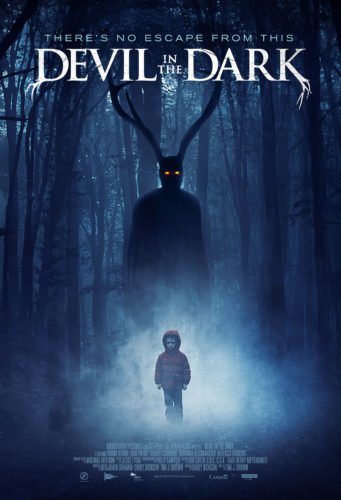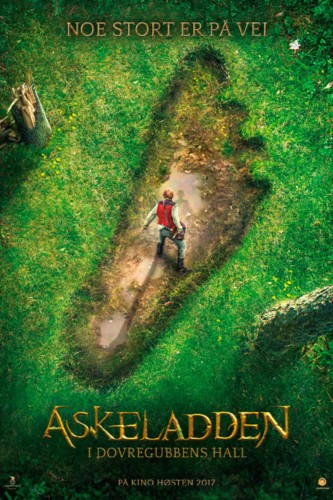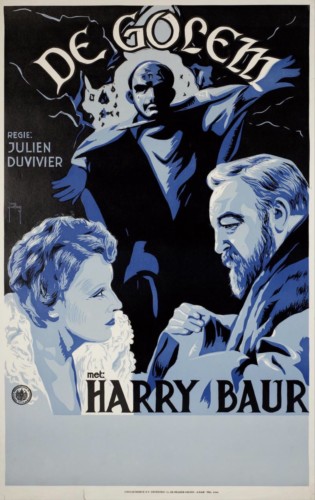 Devil in the Dark (2017) – Two estranged brothers on a camping trip encounter a giant silicon-based pan pizza… wait, that’s a DIFFERENT “Devil in the Dark.” In this, two estranged brothers go camping somewhere in the high Pacific northwest and… strange stuff happens. It’s a very well-acted and well-written production as far as dialogue goes, but man, is it a slow burn (and this is coming from something of a slow-burn aficionado); if it weren’t for ominous incidental music, I’d have concluded by the midpoint that I was watching a straight-up drama. But there’s something strange on the mountain, and it’s tied to the younger brother’s being lost in the woods up there when he was a preschooler, and incident he doesn’t remember but which probably explains why he’s never been big on camping and hunting.
Devil in the Dark (2017) – Two estranged brothers on a camping trip encounter a giant silicon-based pan pizza… wait, that’s a DIFFERENT “Devil in the Dark.” In this, two estranged brothers go camping somewhere in the high Pacific northwest and… strange stuff happens. It’s a very well-acted and well-written production as far as dialogue goes, but man, is it a slow burn (and this is coming from something of a slow-burn aficionado); if it weren’t for ominous incidental music, I’d have concluded by the midpoint that I was watching a straight-up drama. But there’s something strange on the mountain, and it’s tied to the younger brother’s being lost in the woods up there when he was a preschooler, and incident he doesn’t remember but which probably explains why he’s never been big on camping and hunting.
The ending isn’t entirely satisfying. There are movies which successfully maintain a supernatural mystery through the end of the story by making it seem that, even if everything isn’t explained to us, there IS an explanation of which we’re just not aware. Here, though, it’s too hard to maintain that belief that everything makes sense somehow.
(Also, for a long while it seemed like it was going to be a Bigfoot movie. It’s not.)
 The Ash Lad: In the Hall of the Mountain King (2017) – Norway gives the Hollywood treatment to on of its folktales, resulting in a movie that’s pretty Hollywoodish, for good or ill. Espen, youngest of the grown sons living with their widower father, is a dreamer who doesn’t do his fair share around the house; he then earns his new nickname “Ash Lad” when his flakiness burns down the family house. (I suppose this is meant to be endearing — hyuk, hyuk.) Meanwhile, the local princess has defied the legend which says she must be married by her eighteenth birthday and run away instead; the legend says that the legendary “Mountain King” troll will awaken and take her for her own. The king has promised half the kingdom to whoever finds and “rescues” her — as well as the princess’s own hand — which means that the three brothers try to earn the reward to rebuild their home. Also hot on the princess’s tail, as it were, is the arrogant prince with Small Man Syndrome who wants to marry her as an economic investment.
The Ash Lad: In the Hall of the Mountain King (2017) – Norway gives the Hollywood treatment to on of its folktales, resulting in a movie that’s pretty Hollywoodish, for good or ill. Espen, youngest of the grown sons living with their widower father, is a dreamer who doesn’t do his fair share around the house; he then earns his new nickname “Ash Lad” when his flakiness burns down the family house. (I suppose this is meant to be endearing — hyuk, hyuk.) Meanwhile, the local princess has defied the legend which says she must be married by her eighteenth birthday and run away instead; the legend says that the legendary “Mountain King” troll will awaken and take her for her own. The king has promised half the kingdom to whoever finds and “rescues” her — as well as the princess’s own hand — which means that the three brothers try to earn the reward to rebuild their home. Also hot on the princess’s tail, as it were, is the arrogant prince with Small Man Syndrome who wants to marry her as an economic investment.
One would think a princess who runs off rather than submit to the patriarchal yada yada would be more proactive and self-rescuing than we see here, but while she’s smarter than all three brothers put together, it’s Espen’s knowledge of and respect for the folk tales and old ways that wins the day and the heart of the princess. As you knew it would.
 The Golem (1936) – This French film is NOT a dramatization of the tale of Rabbi Loew using Kabbalah to create a Golem to protect the Jews of Prague — it’s actually a sequel story, in which Loew’s successor, the young Rabbi Jacob, has to figure out where the Golem is (hint: it’s in the attic of the synagogue) and whether it’s time to revive it again.
The Golem (1936) – This French film is NOT a dramatization of the tale of Rabbi Loew using Kabbalah to create a Golem to protect the Jews of Prague — it’s actually a sequel story, in which Loew’s successor, the young Rabbi Jacob, has to figure out where the Golem is (hint: it’s in the attic of the synagogue) and whether it’s time to revive it again.
Actually, the movie is about everything but the Golem, as most of the running time is taken up with insane and paranoid King Rudolph, his chancellor who converted from Judaism for the upward mobility, the king’s sometime-bedmate the countess Strada who fears losing her position if the king marries a foreign princess for diplomatic reasons, the beleaguered Rabbi Jacob and his young wife Rachel, a swindling antiques dealer and his assistant who fall in both with the countess and Rachel… We don’t actually get a look at the (non-animated) Golem until the halfway mark, and the screenwriters don’t run out of other things to focus on and finally revive the Golem until five minutes to the end of the movie.
(No trailer, sorry.)

Yeah… not the Star Trek episode.